11 Natural Remedies For Staph Infection + Causes & Symptoms
Everything you need to know about this infection to treat it before it turns deadly.

Image: Midjourney/ StyleCraze Design Team
Staphylococcus bacteria are commonly found on human skin. However, sometimes it may cause staph infections. Minor cases of staph infection can be easily treated with natural home remedies. The number of people with bloodstream staph infections in 2017 was more than 119,000, and nearly 20,000 of them died (1). In addition, the US, Canada, Japan, and Indonesia have experienced epidemic levels of MRSA (Methicillin-Resistant Staphylococcus Aureus) (2).

Staphylococcus bacteria are generally not harmful. However, strains of staph, like MRSA, have antibiotic resistance and the infections can, in some cases, be deadly if they are not treated properly.
In this article, we discuss staph infection in detail, how to treat the condition, and prevention tips. Read on to know more.
In This Article
What Is A Staph Infection?
Staph infections are bacterial infections caused by different strains of the Staphylococcus bacteria.
These bacteria are commonly found on the skin and inside the nose of healthy individuals. They hardly cause any issues most of the time, excluding some minor skin infections in some people.
However, if the staph bacteria enter deeper into your body, the situation can turn deadly. They can invade your bloodstream, joints, bones, lungs, and heart. Of late, a growing number of otherwise healthy people have been developing lethal staph infections.
A survey by CDC (Center for Disease Control and Prevention) found that more than 119,000 bloodstream staph infections were seen in 2017, out of which 20,000 people died. Furthermore, it was estimated in 2016 that every 1 in 10 serious staph infections developed in people who inject opioids.
The signs and symptoms of a staph infection may vary depending on the type of infection it triggers.
Key Takeaways
- Staph infection is caused by Staphylococcus bacteria and is highly contagious.
- While mild staph infections resulting in boils, impetigo, and rashes can be treated at home, severe cases may need medical attention.
- Tea tree oil, apple cider vinegar, and aloe vera are a few common ingredients that can help you deal with staph infections naturally.
- Regular intake of probiotics and multivitamins may also help control a staph infection.
Staph Infection – Types And Symptoms
The common skin infections triggered by the Staphylococcus bacteria are:
- Boils – They usually develop as pockets of pus in the hair follicles or oil glands. The skin surrounding the infected area tends to look swollen and red.
- Impetigoi A bacterial skin illness that is infectious and causes pustules and yellow, crusty sores. It is caused by group A Streptococcus and Staphylococcus aureus. – It is a contagious infection characterized by painful rashes and large fluid-filled blisters that develop a honey-colored crust.
- Cellulitisi A condition in which the connective tissue present below skin gets inflamed and shows symptoms like redness. – This staph infection occurs in the deeper layers of the skin. It causes redness, swelling, and, in some cases, oozing ulcers on the skin. The good news is, you can treat cellulitis without antibiotics.
- Staphylococcal Scalded Skin Syndrome – Staphylococcus bacteria can produce toxins, which results in staphylococcal scalded skin syndrome. It is quite common in babies and children. This infection is characterized by fever, rashes, and blisters. In some cases, the topmost layer of the blistered skin may come off to reveal a raw surface that resembles a burn.
A staph infection may also trigger the following conditions:
- Food Poisoning – One of the leading causes of food poisoning is staph bacteria. Its symptoms usually include nausea, vomiting, dehydration, diarrhea, and/or low blood pressure.
- Septicemiai Also known as blood infection by bacteria, it is the highest degree of response by the body to an infection. – This condition is also known as blood poisoning. It is caused as a result of staph bacteria entering a person’s bloodstream. The symptoms are fever and low blood pressure. Septicemia can also result in infections that affect the internal organs (like the brain, heart, or lungs), bones, muscles, and surgically implanted devices (like artificial joints).
- Toxic Shock Syndrome – This condition is also triggered by the toxins released by some strains of the Staphylococcus bacteria. It has been linked to certain kinds of tampons, surgery, and wounds. The symptoms of toxic shock syndrome are:
- High fever
- Vomiting
- Nausea
- Diarrhea
- Stomach pain
- Confusion
- Muscle aches
- Rashes on the palms or soles
- Septic Arthritis – It targets the knees, fingers, toes, hips, and shoulders. This type of arthritis is caused due to the invasion of the joints by infectious agents like staph bacteria. The symptoms of septic arthritis may include:
- Swelling in the joints
- Pain in the affected area
- Fever
Let us now understand the main cause of this infection.
What Causes Staph Infections?
As already discussed, staph infections are caused by Staphylococcus bacteria. Many people carry these bacteria without even realizing it. If you have developed a staph infection, there is a good chance that you have been carrying these microbes around for quite some time.
These bacteria can easily spread from person to person and may also live long enough on inanimate utensils like towels or pillowcases to infect the next person who touches them.
Dr. Peter Michael, MD, says, “Staph+bacteria can live on bedding for up to 1-2 weeks depending on the material and humidity.”
Staphylococcus bacteria are known to be able to survive extreme temperatures and high levels of salt as well as stomach acid.
If you have been diagnosed with a staph infection, your doctor may either put you on appropriate antibiotics or discuss other treatment options like wound drainage or removal of infected devices. Treatment often depends on the type of infection you are battling.
Listed below are some all-natural remedies that can assist ongoing medication in managing staph infections.
11 Natural Remedies To Get Rid Of A Staph Infection
If you are looking for home remedies for a skin infection like staph, you are at the right place. Read on!
1. Essential Oils
a. Tea Tree Oil
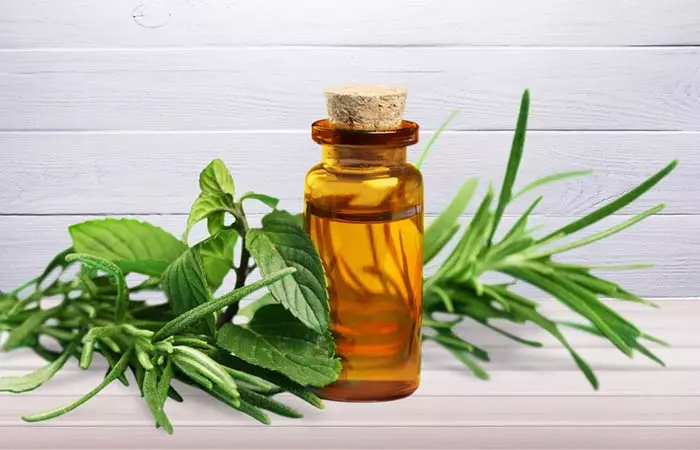
The anti-inflammatory and antimicrobial activities of tea tree oil can help treat skin infections triggered by Staphylococcus bacteria. It works best as adjuvant therapy to existing treatments.
A review in the American Journal of Infection Control highlights the potential of tea tree oil as an effective antimicrobial treatment for Staphylococcus aureus infections, including those resistant to methicillin, an antibiotic. Tea tree oil, known for its antimicrobial and anti-inflammatory properties, has shown promise in treating difficult skin and tissue infections. It has been used traditionally for centuries and has recently gained scientific attention as an adjunctive therapy for infected chronic wounds and osteomyelitis. While tea tree oil generally has few side effects when used topically in low concentrations, contact dermatitis can occur (3).
You Will Need
- 2-3 drops of tea tree oil
- 2 teaspoons of coconut oil (or any carrier oil)
What You Have To Do
- Add two to three drops of tea tree oil to two teaspoons of coconut oil.
- Mix well and apply the mixture to the infected area.
- Leave it on overnight.
- Rinse it off the next morning.
How Often You Should Do This
You may do this once daily.
 Quick Tip
Quick Tipb. Oregano Oil
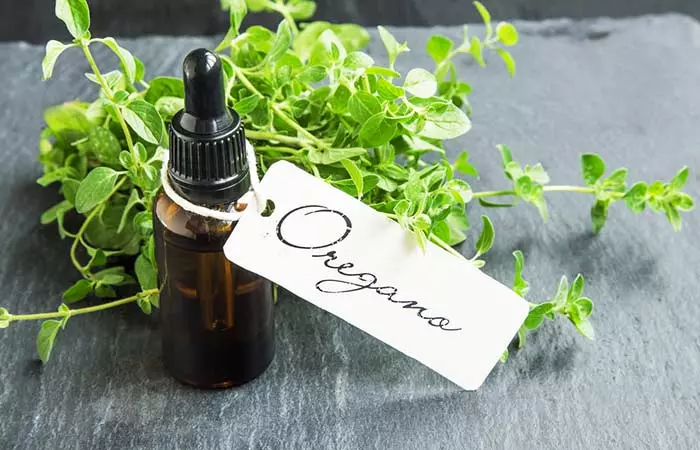
Oregano oil exhibits bactericidal activity on some strains of Staphylococcus bacteria and may be used to treat wound-associated skin infections (4).
You Will Need
- 2-3 drops of oregano oil
- 2 teaspoons of coconut oil (or any carrier oil)
What You Have To Do
- Add two to three drops of oregano oil to two teaspoons of any carrier oil.
- Mix well and apply the mixture to the affected area.
- Leave it on overnight.
- Rinse it off the next morning.
How Often You Should Do This
You may do this once daily.
2. Apple Cider Vinegar
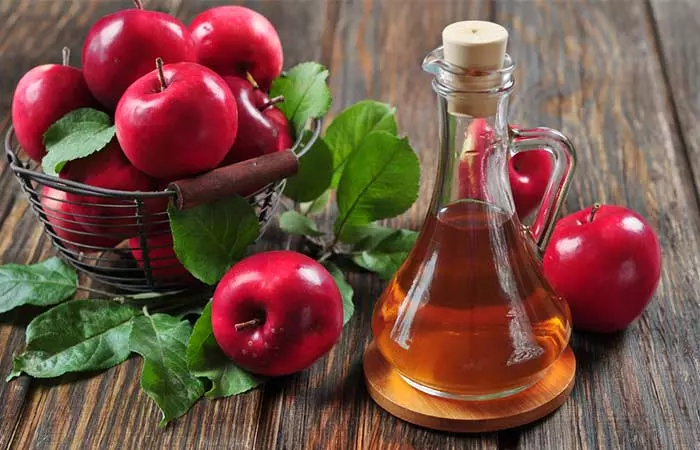
The antimicrobial properties of apple cider vinegar can help eliminate microbes like staphylococcus and can thus help in the treatment of infections triggered by them (5).
You Will Need
- 1 tablespoon of raw apple cider vinegar
- 1 cup of water
What You Have To Do
- Add a tablespoon of raw apple cider vinegar to a glass of water. Mix well.
- Consume this mixture daily.
- You can also use this solution topically for skin infections.
How Often You Should Do This
You can do this once daily. Avoid using this in case of toxic syndrome. Consult your doctor before using it.
 Quick Tip
Quick Tip3. Basil Oil
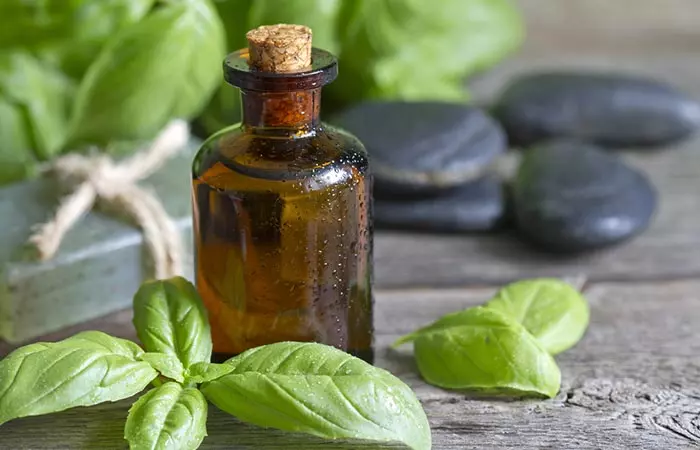
Basil oil shows a powerful inhibitory effect against microbes like Staphylococcus and may be a great option to treat staph infections. A comparative study published in the Journal of Microbiological Methods explores the antimicrobial efficacy of basil essential oil against multidrug-resistant clinical isolates of Staphylococcus, Enterococcus, and Pseudomonas species. The oil’s major components include linalool (54.95%), methylchavicol (11.98%), and methylcinnamate (7.24%). The study showed that the oil has strong inhibitory effects, when used in concentrations ranging from 0.0007% to 0.0030% (v/v), against the resistant bacteria. Given the widespread presence and treatment challenges posed by these bacteria, the findings suggest basil essential oil as a promising antimicrobial agent (6).
You Will Need
- 2-3 drops of basil oil
- 2 teaspoons of any carrier oil
What You Have To Do
- Add two to three drops of basil oil to two teaspoons of any carrier oil like coconut oil.
- Mix well and apply it to the affected skin.
- Leave it on overnight.
- Rinse it off the next morning using water.
How Often You Should Do This
You may do this once daily.
4. Vitamins

Deficiency of vitamin D has been associated with an increased risk of methicillin-resistant Staphylococcus aureus (MRSA) nasal carriage (7). Vitamin C has an inhibitory effect on the bacteria (8).
Hence, increasing the intake of foods rich in these vitamins like dairy products, citrus fruits, green leafy veggies, and egg yolks can help in battling staph infections. Talk to your doctor if you want to take additional supplements for these vitamins.
5. Aloe Vera
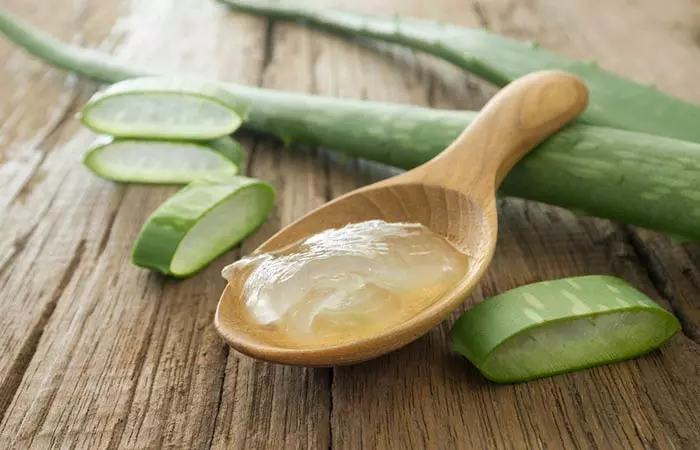
Aloe vera possesses antibacterial activities against Staphylococcus bacteria (9). These activities may be used to treat staph infections.
You Will Need
1 teaspoon of freshly extracted aloe vera gel
What You Have To Do
- Take a teaspoon of freshly extracted aloe vera gel and apply it to the affected area.
- Leave it on for 20-30 minutes and rinse it off with water.
- Drink one-fourth glass of fresh aloe juice for additional benefits.
How Often You Should Do This
You may do this once daily for best results.
6. Probiotics

Probiotic lactobacilli exhibit immunoregulatoryi A property or drug type used to regulate the immune response of the body by either elevating it or suppressing it. activities that can help in eliminating staphylococcus infections from within (10).
You Will Need
Probiotic supplement
What You Have To Do
Take any probiotic supplement daily. Make sure you consult a doctor before taking any additional supplements.
How Often You Should Do This
You may take this once daily or as advised by your doctor.
7. CBD Oil
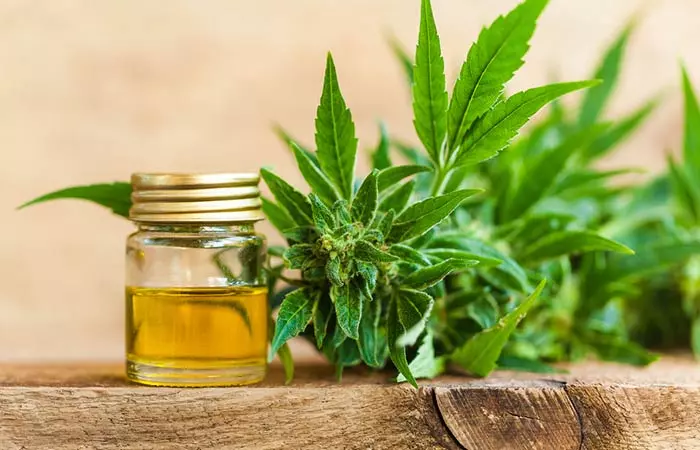
CBD oil exhibits antibacterial activities against many Staphylococcus bacterial strains and can thus be used in the treatment of staph infections. A study published in the Journal of Natural Products investigates the antibacterial properties of cannabinoids from Cannabis sativa, focusing on their potential to combat antibiotic-resistant bacteria like methicillin-resistant Staphylococcus aureus (MRSA). The research showed that five major cannabinoids – cannabidiol, cannabichromene, cannabigerol, Δ9-tetrahydrocannabinol, and cannabinol – showed potent antibacterial activity. These findings suggest that though its mechanism is unknown, cannabinoids may help prevent some infections (11).
You Will Need
A few drops of CBD oil
What You Have To Do
- Apply CBD oil to the affected area.
- Leave it on until it dries.
How Often You Should Do This
You may do this once daily or as directed by your physician.
8. Garlic
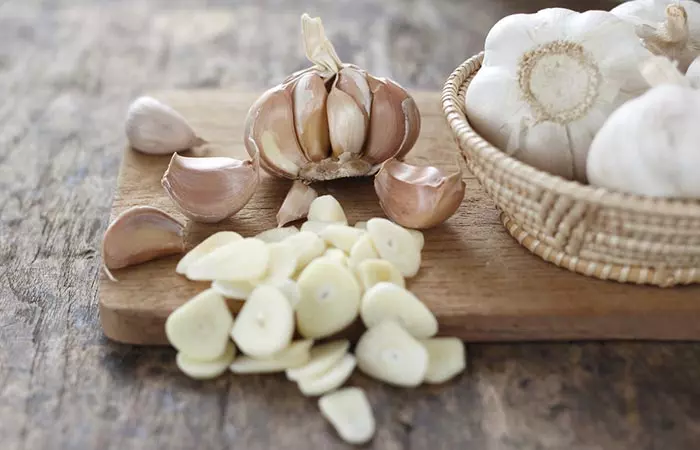
Garlic extracts enhance the antimicrobial activity of antibiotics used on methicillin-resistant strains of Staphylococcus aureus. Hence, garlic can work well as adjuvant therapy in treating staph infections (12).
You Will Need
2-3 garlic cloves
What You Have To Do
- Peel the garlic cloves and
- crush them.
- Add them to your favorite salads and dishes.
- You can also chew on the garlic cloves directly.
How Often You Should Do This
You can do this once daily.
9. Goldenseal

Goldenseali A buttercup-family plant native to North America's woodlands that is utilized in herbal medicine and has a vibrant yellow root. exhibits antimicrobial properties against methicillin-resistant Staphylococcus aureus and may thus be able to treat staph infections (13).
You Will Need
- 1 teaspoon of goldenseal tea
- 1 cup of hot water
What You Have To Do
- Add a teaspoon of goldenseal tea to a cup of hot water.
- Steep for 5 minutes and strain.
- Drink the warm tea.
- Alternatively, you can also take goldenseal supplements after consulting your doctor.
How Often You Should Do This
You may take this concoction 1-2 times daily.
10. Ginger
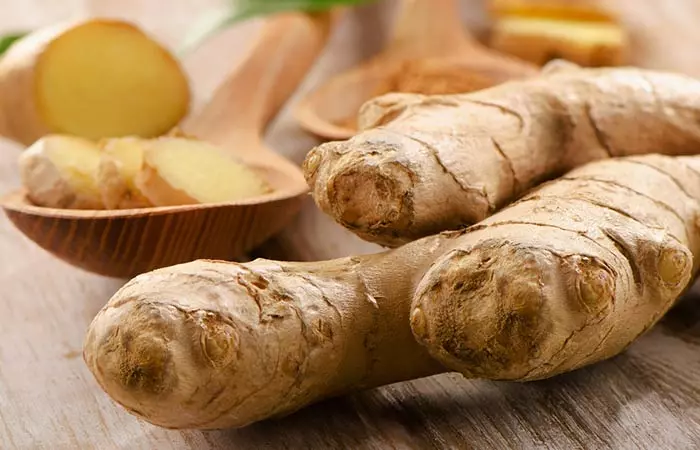
Ginger exhibits antibacterial properties that may be used against bacterial infections caused by Staphylococcus bacteria (14).
You Will Need
- 1 inch of sliced ginger
- 1 cup of water
What You Have To Do
- Add an inch of ginger to a cup of water.
- Bring it to a boil in a saucepan and simmer for 5 minutes.
- Strain and drink the tea.
How Often You Should Do This
You may drink this 1-2 times daily.
Note: You may also add a teaspoon of turmeric to this tea. The antibacterial effects of curcumin may help fight against staph infection (15).
11. Cranberry Juice
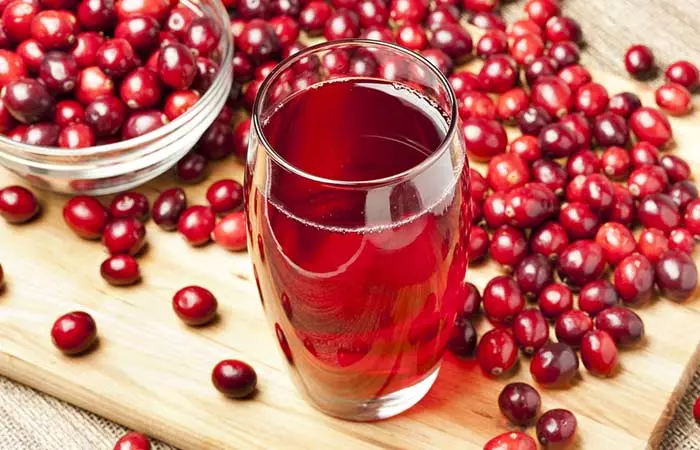
The antibacterial potential of cranberry juice can work wonders against staphylococcus infections (16).
You Will Need
1 ½ cups of cranberry juice
What You Have To Do
Consume cranberry juice.
How Often You Should Do This
You may drink this juice once daily.
Note: While natural treatments for staph infections may offer some benefits, they are not without limitations and potential risks. So, consult a healthcare provider before attempting any natural remedies to ensure they are safe and appropriate for your specific situation. Some natural treatments may interact with medications, exacerbate underlying conditions, or fail to address the severity of the infection, potentially leading to complications.
In addition to the above remedies, here are some tips that can help prevent the recurrence of staph infections.
How To Prevent A Staph Infection
- Wash your hands with soap and water at regular intervals, especially after using the washroom and before eating.
- Keep the open wounds and cuts covered with bandages until they heal completely.
- Change your tampon every 4-8 hours to avoid staph infections like toxic shock syndrome.
- Do not share personal items like razors, towels, sheets, and clothing with others.
- Wash possibly infected clothing and bedding in hot water.
- Follow the necessary safety precautions while handling food. Refrigerate leftovers as soon as possible.
The remedies discussed above can work wonderfully in battling staphylococcus infections. However, you must avail medical intervention for such infections and use the home remedies only to assist ongoing medical treatments. Take a look at the next section for medical treatment options for staph infection.
Signs That Require Immediate Medical Treatment
While home remedies can complement professional medical care, they shouldn’t be used as sole treatment plans. While they may help treat minor infections, it is important to recognize the signs that indicate the need for immediate medical attention. If you experience any of the following symptoms, seek professional healthcare promptly:
- High fever or chills
- Rapidly spreading redness, swelling, or pain
- Pus-filled blisters or abscesses
- Difficulty breathing or chest pain
- Persistent symptoms that do not improve with initial treatment
Home remedies should never replace professional medical care, especially in cases of severe or persistent infections. Always prioritize consulting with a healthcare provider to ensure the best possible outcome.
Medical Treatment For Staph Infection
Medical treatment for a staph infection involves antibiotics and, in severe cases, draining the abscess. The treatment depends on the severity of the infection. Here are the medical treatments used for staph infection:
- Antibiotics
They are the first line of treatment for most staph infections. Methicillin-resistant staphylococcus aureus (MRSA) infections need specific antibiotics to combat them. Your doctor may give you an ointment, oral antibiotic, or even administer it intravenously to treat it. - Wound Drainage
If the infection has become an abscess, your doctor may make an incision and drain the infected liquid to speed up the healing process. - Wound Care
This involves keeping the affected area clean and properly bandaging it to prevent further infection and promote healing.
Comparison Of Natural vs. Conventional Treatments For Staph Infections
| Aspect | Natural Treatments | Conventional Treatments |
| Effectiveness | May provide relief for mild symptoms | Proven effectiveness through clinical trials |
| Safety | Generally safe but can have side effects or interactions | Monitored for safety but can have side effects |
| Cost | Often lower cost | Can be expensive |
| Speed of Relief | May take longer to show results | Often provides faster relief |
| Use for Severe Infections | Not recommended for severe cases | Essential for treating severe infections |
Infographic: Effective Remedies To Get Rid Of A Staph Infection
Staphylococcus bacteria are germs commonly found on the skin. However, they can cause several adverse effects if they enter deep into the body. But the good news is that some effective home remedies can help you deal with several such staph infections. Click on the infographic below to learn more about these home remedies and get rid of your staph infection.
Some thing wrong with infographic shortcode. please verify shortcode syntax
Staph infections are harmless bacterial infections caused by Staphylococcus strains. These bacterial strains are commonly found on the skin and inside the nasal cavities of healthy individuals. But if these strains enter the body through cuts, wounds, or contaminated food, they may cause infections. While minor infections may heal in days, severe ones take some time. However, you also can use certain natural remedies for staph infections. Essential oils like tea tree and oregano oils, apple cider vinegar, basil oil, vitamins C and D, and aloe vera may help reduce staph infections. In addition, washing your hands with soap and covering open wounds may prevent this infection. Combine these remedies and tips for better results. Remember to consult your doctor if the problem persists.
Hope you found this post helpful. Do you have any more queries related to staph infections? Get in touch with us through the comments section below.
Frequently Asked Questions
What are the long-term effects of untreated staph infections?
If left untreated, staph infections can lead to serious complications like the spread of infection to other organs, chronic infections, and possible damage to tissues and organs. In severe cases, it can cause sepsis, a life-threatening condition.
Can I shower with a staph infection?
Dr. Michael says, “You can shower with a staph infection. Make sure to use soap and water on a cloth and gently clean the area. Do not reuse a cloth or towel, dry the area and apply a warm compress.”
Is hydrogen peroxide good for staph infection?
According to Dr. Michael, “Hydrogen peroxide can be effective in treating some forms of staph but only if applied directly to the infected area or wound as prescribed by your doctor.”
What ointment is good for staph?
Antibacterial ointments such as mupirocin (available as Bactroban) may help treat a staph infection. There are many easy remedies for impetigo. If there’s no improvement, it’s recommended that you consult a doctor.
Is a staph infection itchy?
Yes. A staph infection often leads to sores that are itchy, but not usually painful.
Can you squeeze staph infection?
No, it is not advisable to pop, pick or squeeze pus-filled sores caused due to a staph infection. Doing so may cause further infections, delay healing or spread the pathogens around.
What ointment is good for staph?
Antibacterial ointments such as mupirocin (available as Bactroban) may help treat a staph infection. If there’s no improvement, it’s recommended that you consult a doctor.
Is rubbing alcohol good for staph infections?
No. Rubbing alcohol shows antimicrobial properties and may be helpful as a disinfectanti Drugs or antimicrobial liquids that are on the surface of inanimate things to kill any living microorganisms there. against staph (17). There is, however, some contradictory evidence to suggest that it may not be as effective in reducing the viability of the bacteria (18). In addition, there is no evidence to suggest that rubbing alcohol can be used as a treatment for staph infections.
Illustration: Natural Remedies For Staph Infection + Causes & Symptoms
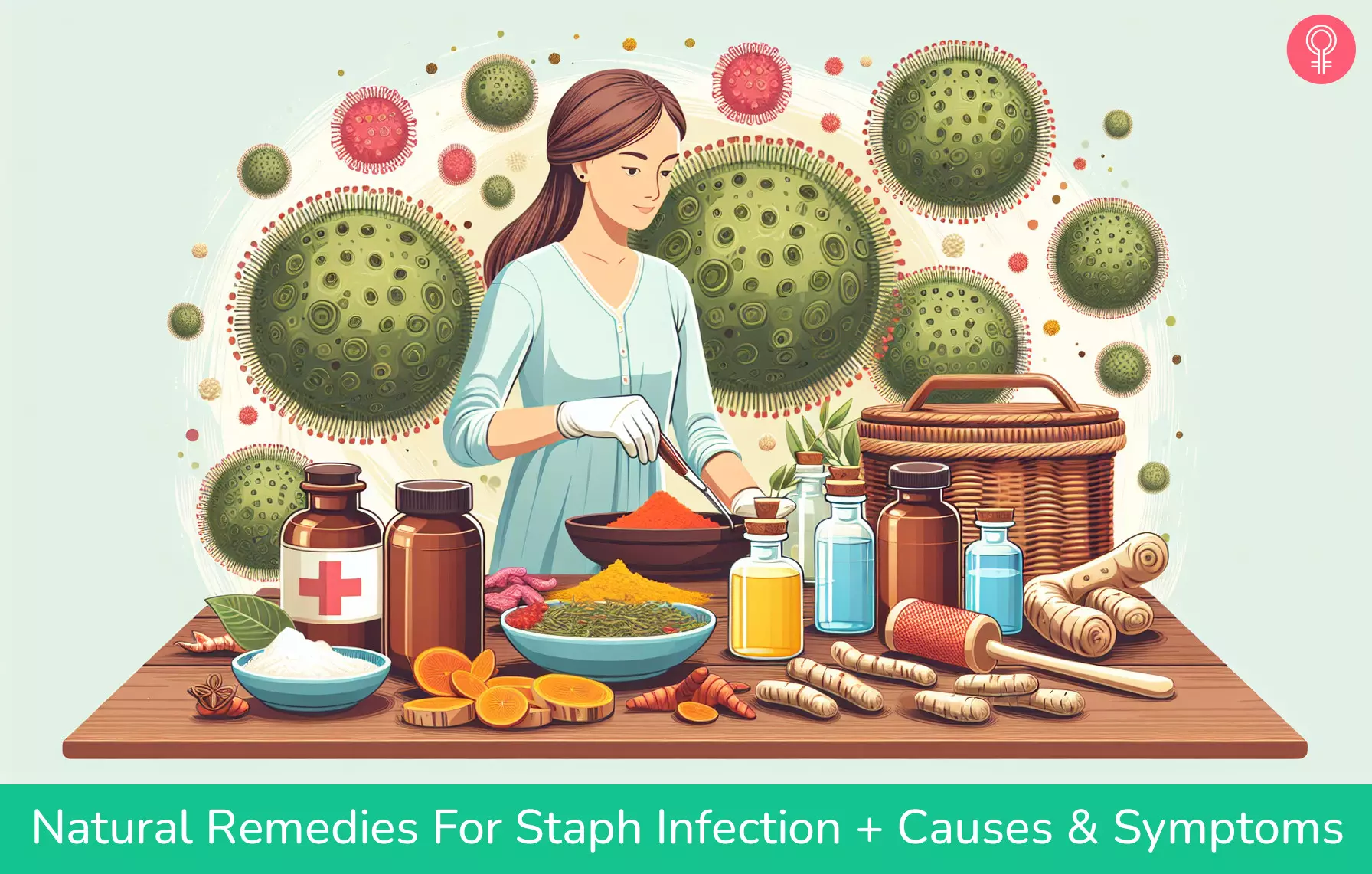
Image: Dall·E/StyleCraze Design Team
Learn the fastest way to cure a staph infection with 5 home remedies! Discover natural treatments to help you fight the infection and get back to feeling healthy.
References
Articles on StyleCraze are backed by verified information from peer-reviewed and academic research papers, reputed organizations, research institutions, and medical associations to ensure accuracy and relevance. Read our editorial policy to learn more.
- “Staph infections can kill” Vital Signs, Centers for Disease Control.
- “Infection control measures in nosocomial MRSA outbreaks—Results of a systematic analysis
- “Staphylococcus aureus and wounds: a review of tea tree oil as a promising antimicrobial.” American Journal of Infection Control, US National Library Of Medicine.
- “Bactericidal Property of Oregano Oil Against Multidrug-Resistant Clinical Isolates.” Frontiers In Microbiology, US National Library Of Medicine.
- “Antimicrobial activity of apple cider vinegar against Escherichia coli, Staphylococcus aureus and Candida albicans; downregulating cytokine and microbial protein expression” Scientific Reports, US National Library Of Medicine.
- “Comparative studies on the activity of basil–an essential oil from Ocimum basilicum L.–against multidrug resistant clinical isolates of the genera Staphylococcus, Enterococcus and Pseudomonas by using different test methods.” Journal of Microbiological Methods, US National Library Of Medicine.
- “Vitamin D and methicillin-resistant Staphylococcus aureus nasal carriage.” Scandinavian Journal of Infectious Diseases, US National Library Of Medicine.
- “Vitamin C inhibits staphylococcus aureus growth and enhances the inhibitory effect of quercetin on growth of Escherichia coli in vitro.” Planta Medica, US National Library Of Medicine.
- “Aloe vera extract: A novel antimicrobial and antibiofilm against methicillin resistant Staphylococcus aureus strains.” Pakistan Journal of Pharmaceutical Sciences, US National Library Of Medicine.
- “Probiotic Lactobacilli Modulate Staphylococcus aureus-Induced Activation of Conventional and Unconventional T cells and NK Cells” Frontiers In Immunology, US National Library Of Medicine.
- “Antibacterial cannabinoids from Cannabis sativa: a structure-activity study.” Journal of Natural Products, US National Library Of Medicine.
- “Fresh Garlic Extract Enhances the Antimicrobial Activities of Antibiotics on Resistant Strains in Vitro” Jundishapur Journal Of Microbiology, US National Library Of Medicine.
- “Quorum quenching and antimicrobial activity of goldenseal (Hydrastis canadensis) against methicillin-resistant Staphylococcus aureus (MRSA).” Planta Medica, US National Library Of Medicine.
- “Antibacterial effect of Zingiber officinale and Garcinia kola on respiratory tract pathogens.” East African Medical Journal, US National Library Of Medicine.
- “Anti-MRSA activity of curcumin in planktonic cells and biofilms and determination of possible action mechanisms.” Microbial Pathogenesis, US National Library Of Medicine.
- “The antimicrobial effects of cranberry against Staphylococcus aureus.” Food Science and Technology International, US National Library Of Medicine.
- “ Understanding the antimicrobial activity of selected disinfectants against methicillin-resistant Staphylococcus aureus (MRSA)” NCBI
- “ Ethanol and Isopropyl Alcohol Exposure Increases Biofilm Formation in Staphylococcus aureus and Staphylococcus epidermidis” NCBI
Read full bio of Dr. Archna Agrawal
- Dr. Peter Michael is a physician with 18 years of experience. He graduated from the University of Miami Miller School of Medicine and completed his internal medicine residency at Howard University Hospital and his physical medicine and rehabilitation (PM&R) at the University of Miami Miller School of Medicine.
 Dr. Peter Michael is a physician with 18 years of experience. He graduated from the University of Miami Miller School of Medicine and completed his internal medicine residency at Howard University Hospital and his physical medicine and rehabilitation (PM&R) at the University of Miami Miller School of Medicine.
Dr. Peter Michael is a physician with 18 years of experience. He graduated from the University of Miami Miller School of Medicine and completed his internal medicine residency at Howard University Hospital and his physical medicine and rehabilitation (PM&R) at the University of Miami Miller School of Medicine.
Read full bio of Shaheen Naser
Read full bio of Arshiya Syeda
Read full bio of Dipti Sharma








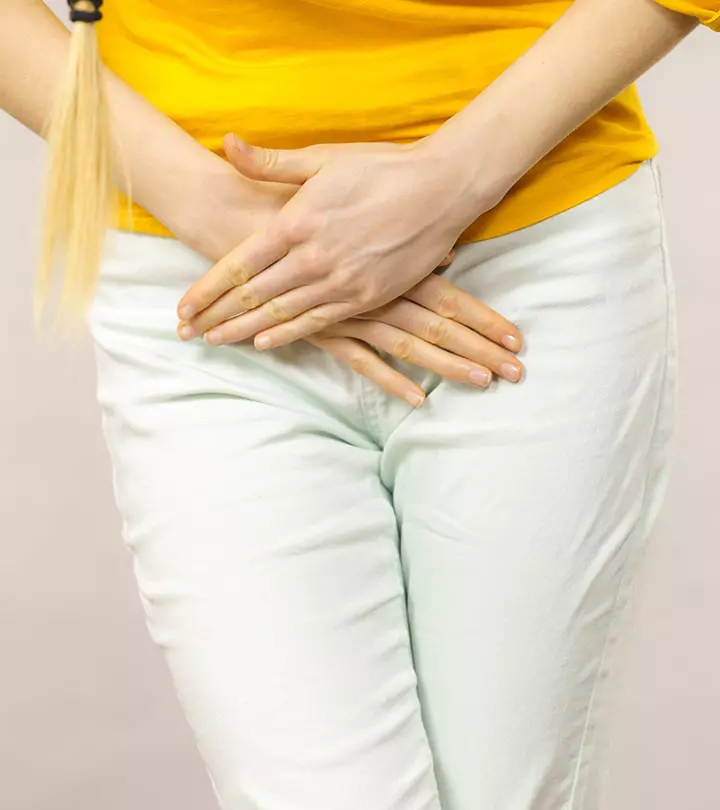


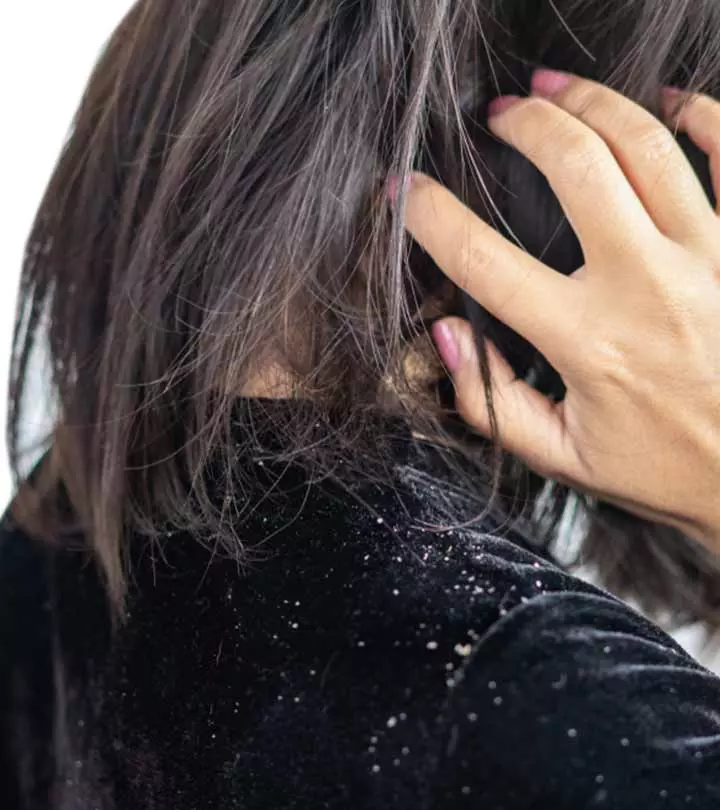
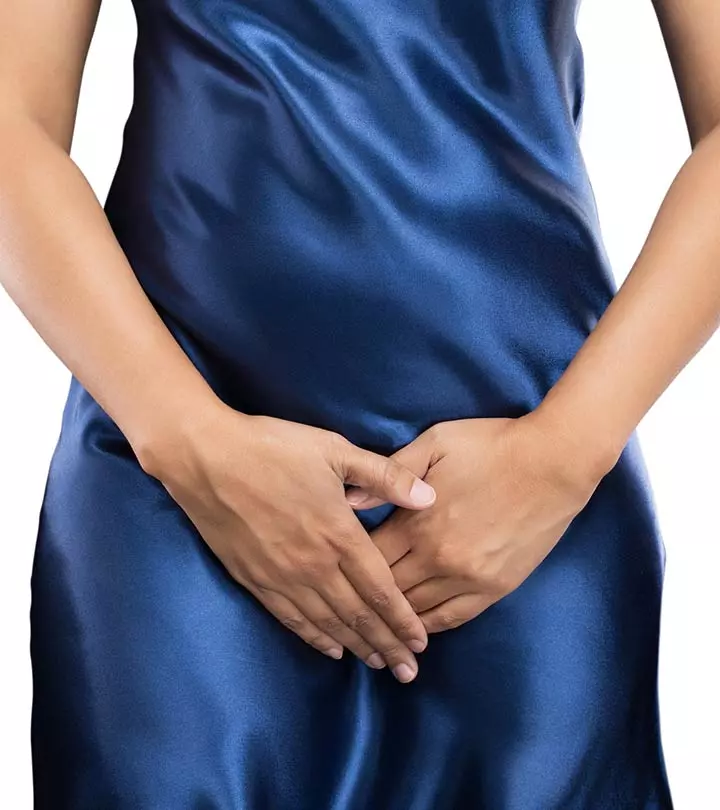
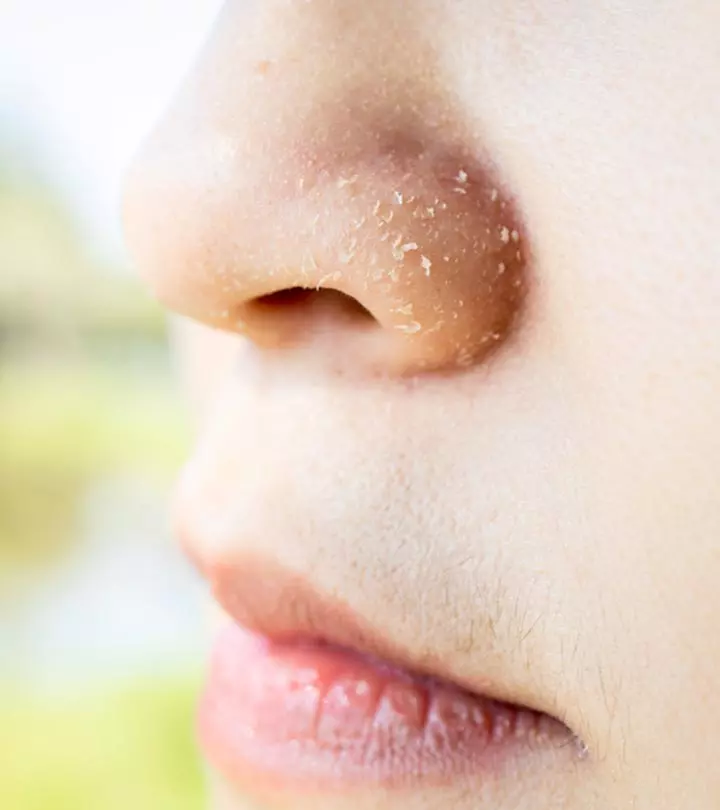












Community Experiences
Join the conversation and become a part of our empowering community! Share your stories, experiences, and insights to connect with other beauty, lifestyle, and health enthusiasts.